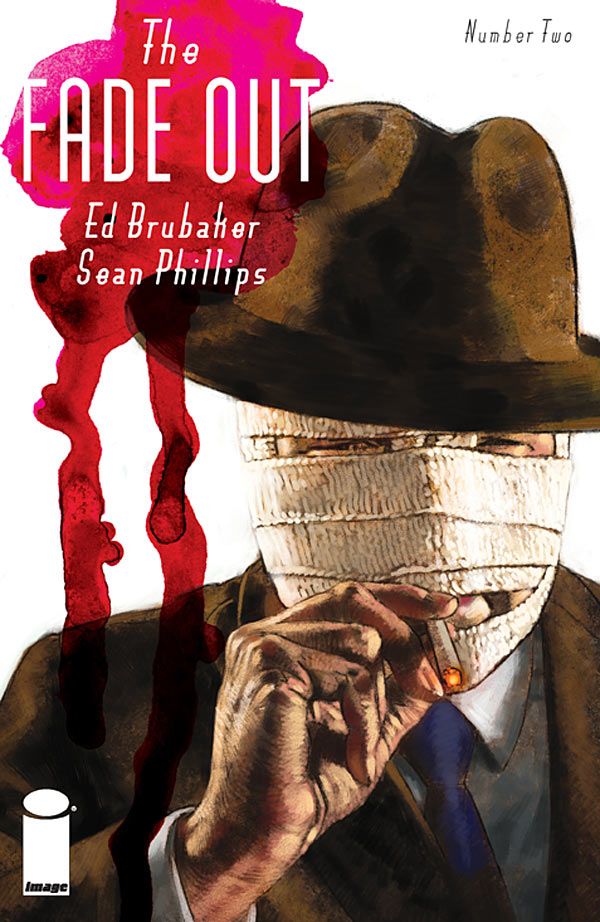Ed Brubaker and Sean Phillips' "The Fade Out" is almost the platonic ideal of a "slow burn" mystery. The creative team is in no rush to start investigating in earnest. Instead, the second issue is devoted to atmosphere, character and nested subplots. While Valeria's death remains a mystery, Charlie and Gil's relationship is expanded and clarified.
Brubaker is as interested in a character study of Charlie Parish as he is in the identity of Valeria Sommers' murderer. Though he drops quite a few new clues at her funeral, each observation circles melancholically back to Charlie, for whom "[funerals] were just another of life's rituals that he felt removed from." Similarly, when he introduces the costume seen on the cover, Brubaker includes Charlie's thought that "it would be a relief to have a mask everyone could see, but that made them all look away at the same time."
Sean Phillips continues to prove that he's a master of modern noir. "The Fade Out" is reportedly his first all-digital comic, but it feels as seamless and gritty as his previous work. His relentlessly dark, shadow-crossed and heavily inked panels are as emotionally open as their compositions are closed in. In collaboration with colorist Elizabeth Breitweiser, he creates amazing emotional beats from Brubaker's script.
Breitweiser is excellent throughout. She uses splotches of color in unexpected arrangements, giving everyone the appearance of being forever in shadow or inside with the windows drawn. In addition, the issue shifts between flashbacks, the present and film footage, and she handles the transitions seamlessly and subtly. Indeed, the shifts are almost negligible -- a visual reminder that the past and present are so deeply intertwined in "The Fade Out."
More than anything, though, the eyes sell it. Phillips and Breitweiser draw remarkably expressive eyes that glisten, stark and white, out of the otherwise dark and variegated panels. Even Charlie's thick glasses don't hide them. This skill is especially noticeable in the contrast between Valeria on-screen and Valeria off-screen. On-screen Valeria is clearly acting, with hard and over-bright eyes, while off-screen her eyes are more expressive and natural. I've seen artists draw clearer facial expressions than Phillips, but never clearer eyes.
The only section that doesn't quite work for me is Charlie's remembrance of Valeria. These flashbacks feel boxed in and a little false. I understand the impulse to make the reader care for Valeria, as "The Fade Out" is also her story, but her characterization in this scene feels more like she's a character in Charlie's head -- all performance, no interiority. Valeria as a victimized well of mystery is far less interesting than Valeria as a thinking, talking person -- but when the reader only sees her through Charlie's flashbacks, Brubaker ends up writing her a lot more like the former.
Charlie's connection to Gil is much more believable for this same reason. Gil's past as mentor and friend stands beside Gil's present as drunken co-conspirator and nuisance. The reader not only sees Charlie's remembrance of Gil's decency, but sees the remnant of that decency in action when he cries, "those fat-cat bastards are gonna get away with this." Charlie is exhausted and impotent, but Gil -- drunken and disorderly and blacklisted though he may be -- isn't too tired to fight just yet. These interactions give Gil an existence outside of Charlie's perceptions -- indeed, an existence that defies Charlie's perceptions. This is a luxury Valeria isn't given.
Still, "The Fade Out" is simply the best at what it does. It's a clear creative statement that any fans of noir shouldn't miss.

